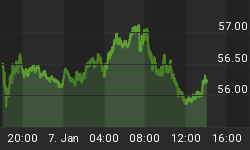From Wikipedia...
Musa Keita I (c. 1280 - c. 1337) was the tenth Mansa, which translates as "sultan" (king) or "emperor", of the wealthy West African Mali Empire.
During his reign Mali may have been the largest producer of gold in the world at a point of exceptional demand. One of the richest people in history, he is known to have been enormously wealthy; reported as being inconceivably rich by contemporaries, "There's really no way to put an accurate number on his wealth" (Davidson 2015).
Musa made his pilgrimage (to Mecca) between 1324-1325. His procession reportedly included 60,000 men, including 12,000 slaves who each carried 4 lb (1.8 kg) of gold bars and heralds dressed in silks who bore gold staffs, organized horses, and handled bags. Musa provided all necessities for the procession, feeding the entire company of men and animals. Those animals included 80 camels which each carried 50-300 lb (23-136 kg) of gold dust. Musa gave the gold to the poor he met along his route. Musa not only gave to the cities he passed on the way to Mecca, including Cairo and Medina, but also traded gold for souvenirs. It was reported that he built a mosque every Friday.
But Musa's generous actions inadvertently devastated the economy of the regions through which he passed. In the cities of Cairo, Medina, and Mecca, the sudden influx of gold devalued the metal for the next decade. Prices on goods and wares greatly inflated. To rectify the gold market, on his way back from Mecca, Musa borrowed all the gold he could carry from money-lenders in Cairo, at high interest. This is the only time recorded in history that one man directly controlled the price of gold in the Mediterranean.
Musa is considered by some historians to be the single, most wealthy individual in history and his wealth is estimated to be the inflation-adjusted equivalent of four hundred billion US dollars in today's money.
Musa's actions were charitable and laudable. And the effects of his actions on the gold market at the time were unintentional. Yet, still inevitable.
The "sudden influx of gold" constituted an increase in the supply of money which resulted in "prices on goods and wares greatly inflated". This is a classic, historical example of inflation.
The economies of the regions that Musa visited were relatively industrious with a reasonably stable economy. And the gold which Musa carried with him was not, for the most part, circulating as part of the money supply in the world at that time. In a short period of time, large amounts of gold (i.e. money) were put in circulation. With more money available, more aggressive bidding for various "goods and wares" drove prices for those items higher.
The 'higher prices' for goods and wares was an inverse reflection of the loss of purchasing power of the money (gold) in circulation.
Gold is not immune to inflation. This is not an indictment of gold. But it does serve to illustrate the vulnerability of money regarding the consequences of inflation. And Mansa Musa acted benevolently, as an individual. Also, his actions and resulting effects were basically a one-time event.
On the other hand, inflation, as practiced by the United States Government and the Federal Reserve, is intentional and perpetual. Over one hundred years old and still going strong. The effects of those efforts are unpredictable and wildly volatile. And the value of our money continues to erode.
And, whereas, Musa acted immediately to help alleviate the problem which his actions created by borrowing "all the gold he could carry from money-lenders in Cairo, at high interest", the Federal Reserve purposely inflicts harm on the monetary system by continually expanding the supply of money and credit. It will distort every monetary measure of value we are inclined to rely on and at some point the system will implode.
The problems arising from Musa's actions were systemic and not related to the 'form' of money in use. And those problems were limited because the money supply was limited. No one could produce more money (i.e. gold) by printing it.
Which is why governments hate gold. It is a restraint on their free-spending, expansionary policies. Even the example of Mansa Musa does not diminish the role gold plays in this regard. Or its rightful place as real money - original money.
To read more about gold's role as real money see The History Of Gold As Money.















